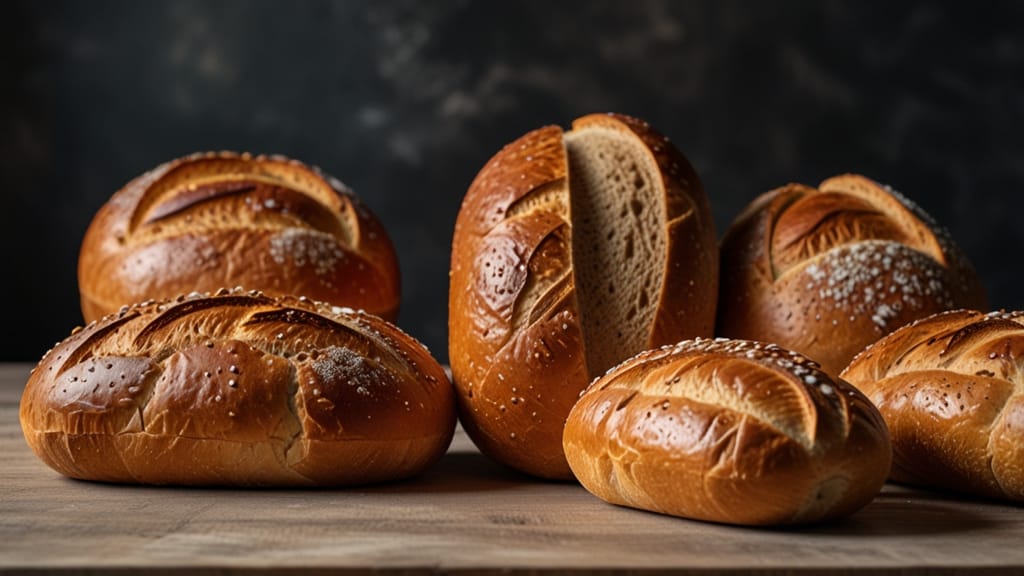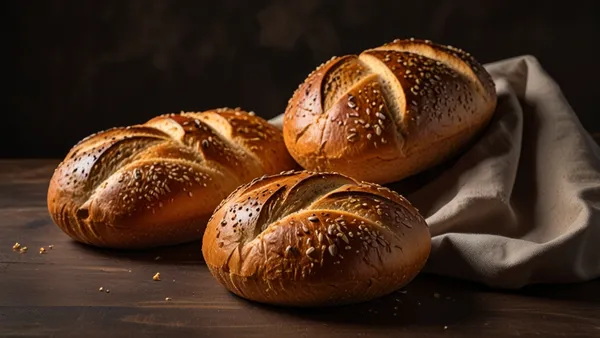🍞 A Summary
1. Historical Context & Origins of Bread
- Bread has been humanity's staple for millennia, traditionally crafted from whole grains and natural fermentation.
- In places like Europe and the Middle East, fermenting methods such as sourdough were passed down through generations, infusing bread with flavor and nutrition.
2. Industrial Revolution & Mass Production
- The rise of the Industrial Revolution and mass food production in the U.S. brought dramatic changes.
- Mechanization boosted output but began sidelining taste and nutritional value in favor of shelf stability and uniformity.
- Traditional slow fermentation was replaced by faster industrial processes using refined flours and chemical enhancers.
3. Commercial Priorities
- Large-scale bakeries focused on creating white, soft, packaged sliced bread as a convenience product.
- Additives and preservatives became standard to extend shelf life, reduce staling, and appeal to mass markets.
4. Regulatory Influence
- U.S. food policies and subsidies favored wheat, especially processed white flour.
- Standards for enriched and bleached flour reduced the drive to retain nutrients naturally present in whole grains.
5. Shifting Consumer Palates
- Over time, Americans grew accustomed to bland, uniform supermarket loaves.
- Many foreign visitors (and expatriates) lament the lack of flavor compared to artisanal, fermented European breads.
6. Globalization & Feedback Loops
- U.S. trends in food science and manufacturing spread globally, reinforcing processed-bread standards elsewhere.
- Meanwhile, European-style bakeries in the U.S. have emerged to cater to niche markets, challenging the status quo.

The Rise and Fall of American Bread: A Stale Tale of Industry Over Integrity
The Rise and Fall of American Bread: A Stale Tale of Industry Over Integrity
By The Voice of the Uncrowned
Bread is older than empires, deeper than doctrines. For millennia, it was a symbol of life, ritual, and shared human craft — fermented slowly, forged by hand, and rich with the complexity of nature’s microbial symphony. But in America, something sacred was hollowed out. In its place: a soft, pale imposter, vacuum-packed and shelf-stable, devoid of soul or sustenance.
In his eye-opening video essay “How the U.S. Ruined Bread,” journalist Johnny Harris dissects this transformation with precision and personal curiosity. The tale he unravels is not just about bread — it’s about a civilization's quiet surrender to speed, profit, and convenience.
The Sacred Turned Synthetic
Bread’s ancient lineage began with simplicity: ground grain, water, and time. The earliest loaves were fermented with wild yeasts and bacteria — the same living forces that shaped sourdoughs, flatbreads, and hearty peasant loaves across the world.
But in America, the Industrial Revolution cracked open a portal to something else. Mass production, economic pressures, and marketing reshaped bread into a product rather than a process. The goal was no longer nourishment or flavor — it was efficiency. Longer shelf life. Lighter crumb. Whiter color. Uniformity over uniqueness.
By the mid-20th century, the archetype of American bread was no longer crusty and fermented. It was soft, sliced, and bagged — its flour bleached, its structure puffed up by dough conditioners and chemical leaveners. Bread had become a shadow of its former self.
The Nutritional Mirage
The rise of white bread wasn’t just a culinary shift — it was a nutritional deception. As factories milled out ever-refined flour, they stripped grains of their fiber, minerals, and vitality. America responded with “enrichment”: synthetic vitamins added back into an otherwise barren foodscape. This bandaid was hailed as progress, but it only highlighted the problem — real bread didn’t need to be “fixed.”
Harris shows that the standard American loaf became a triumph of appearance over essence. Bread was white because white implied purity and modernity. But in reality, it was dead food — sterile, flat, incapable of nourishing in any meaningful way.
Cultural Amnesia
A generation grew up without ever tasting real bread. Supermarket shelves offered the illusion of abundance, but variety was skin-deep. For many Americans, the very idea of crusty, fermented, tangy loaves seemed foreign — something for bougie city bakeries or European travelers.
Meanwhile, the world looked on with pity or confusion. In France, bread is national identity. In Germany, it’s law-regulated heritage. In the U.S.? Bread was reduced to a filler — something to spread peanut butter on or wrap around processed meats.
The Rise of Resistance
But change is fermenting.
Across the U.S., artisan bakeries are rising like wild yeast cultures — from San Francisco to Brooklyn, bread is being reborn. Sourdough has become a symbol of conscious rebellion against fast food logic. People are kneading their way back to the sacred.
This isn’t just nostalgia — it’s restoration. A reclaiming of time, taste, and truth. As Harris points out, the growing sourdough renaissance is more than a food trend. It’s cultural therapy.
Bread As Mirror
“How the U.S. Ruined Bread” is not just an exposé of food history. It’s a parable. It reveals how easily a society can trade depth for speed, wisdom for efficiency, nourishment for illusion.
Bread, in all its simplicity, reflects our collective values. What we’ve done to it, we’ve done to ourselves: rushed, bleached, processed, and robbed of depth.
But just as sourdough can rise from a simple starter, so too can culture reawaken. One loaf at a time. One truth at a time.



